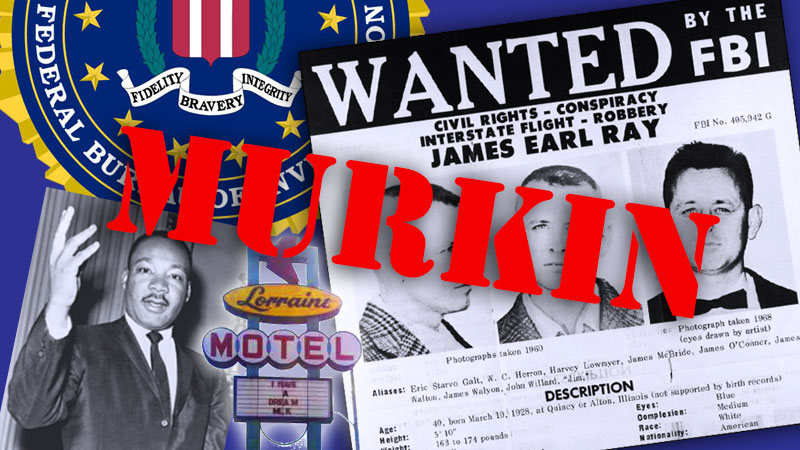
April 2018 marks the 50th anniversary of the FBI’s largest manhunt for James Earl Ray, killer of Martin Luther King, Jr. This article by Susan E. Lloyd (FBI 1979-2004) was published in the April 2018 issue of The Grapevine, a publication of the Society of Former Special Agents of the FBI.
Because of the breadth of the “MURKIN” case, several portions of the investigation have been omitted from this article. For those readers who are interested in additional information, there are numerous articles and books about the case available in the public domain. I thank George Bonebrake’s daughter, Priscilla Andachter and her husband, retired FBI Special Agent Ron Andachter, for their time and contributions to this article.
“MURKIN” — The Largest Manhunt in America’s History (pdf)
In the early morning hours of April 5, 1968, FBI fingerprint expert and supervisor George J. Bonebrake began an examination of the evidence from one of the highest profile cases in the history of the FBI. Less than 12 hours before, Dr. Martin Luther King Jr. had been assassinated while standing on the balcony of the Lorraine Motel in Memphis, TN. Although a number of pieces of evidence had been collected and flown overnight to the FBI in Washington, DC, the identity and whereabouts of the shooter was unknown.
Dubbed “MURKIN” for King’s murder, the largest manhunt in American history was underway.
The intersection of the paths of the assailant and Dr. King in Memphis began one year earlier when Prisoner #416-J escaped from the state penitentiary in Jefferson City, MO, where he had already served seven years for armed robbery, with 18 more to go. A career criminal, the prisoner had worked in the prison kitchen for a number of years, primarily in the bakery.
On the morning of April 23, 1967, the prisoner, James Earl Ray, dressed in layers with makeshift civilian garb under his prison uniform. At some point, he went to the loading dock and climbed into a large metal box — 4’ x 3’ x 3’ — which was partially loaded with fresh bread destined for delivery to the prison’s honor farm. Fellow prisoners placed a false bottom on top of him and then filled the remaining space with more loaves of bread. Two inmates hoisted the box into the bed of the delivery truck,
As the truck approached the honor farm, Ray jumped unseen from the back of it and made his way to a nearby river. He had the clothes on his back, 20 candy bars, a small transistor radio and almost $300 in cash. A “Wanted” poster was soon distributed which announced a $50 reward for his capture.
Ray walked west for six days alongside railroad tracks and then hopped an eastbound train. As the months of 1967 went by, Ray kept moving and lived for brief periods in St. Louis, Chicago, Toronto, Montreal, Birmingham and Puerto Vallarta, Mexico. He used the name “Eric Galt” and carried a .38 snub-nosed revolver. In Birmingham, he bought a 1966 white Mustang bearing Alabama license tags which he drove to Mexico and eventually on to Los Angeles, arriving there in mid- November. His money came from selling marijuana from Mexico, robberies and smuggling schemes.
While in Los Angeles, Ray attended a six-week bartending class, enrolled in a locksmith course and took dance lessons. His primary commitment, however, was to his work as a volunteer at George Wallace’s presidential campaign headquarters in North Hollywood. There he spent hours collecting signatures to allow Wallace’s name to appear on the state’s primary ballot.
By March 17, Ray had concluded his work for the Wallace campaign. He packed his Mustang with his few belongings and got on the road the next day for Atlanta, the hometown of Martin Luther King Jr. After arriving there, he rented a room in a shabby rooming house in the midtown neighborhood, paying rent for one week. . . . (read the rest)
You must be logged in to post a comment.